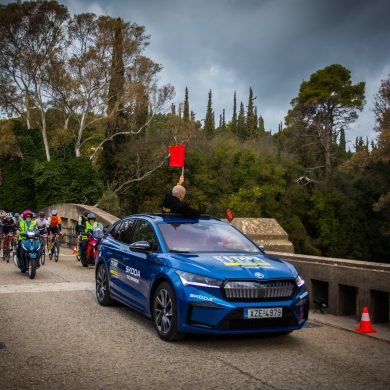
After winning its 7th consecutive Formula 1 title, Mercedes is also celebrating today for gaining the highest step on the Nurburgring record podium. The stunning GT Black Series (click here for the article), managed to dethrone Porsche's GT2 RS, setting an amazing time of 6:43.
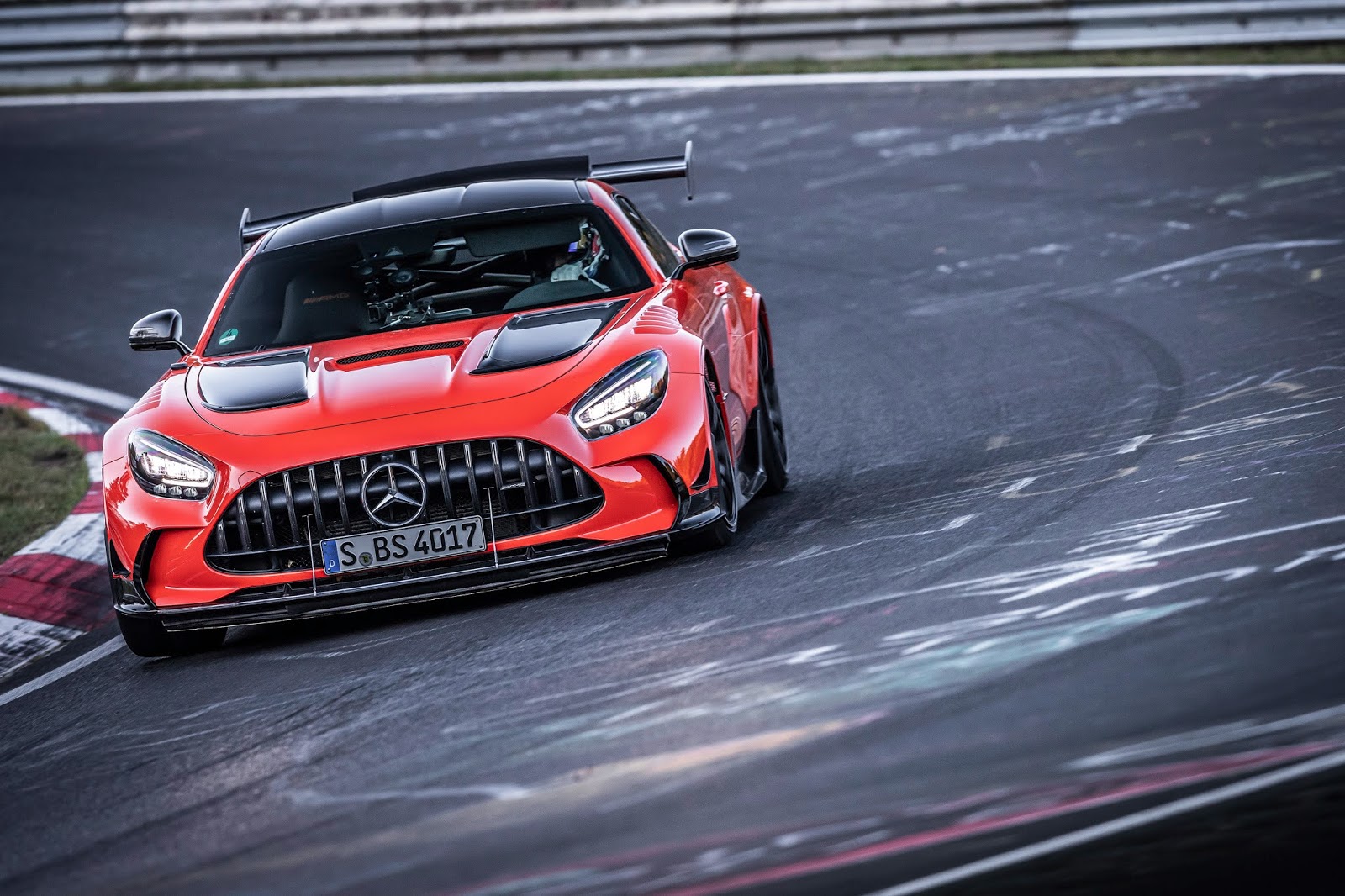
With an officially recorded and confirmed time of 6:43,616 for the 20.6 kilometres of the Green Hell and 6:48,047 for the full lap (see at the end of the article for details), the GT Black Series becomes the fastest production car (which is why we don't count the GT2 RS MR's 6:40), with a time 31 seconds faster than its younger sister, the GT R Pro (read our tribute, by clicking here).
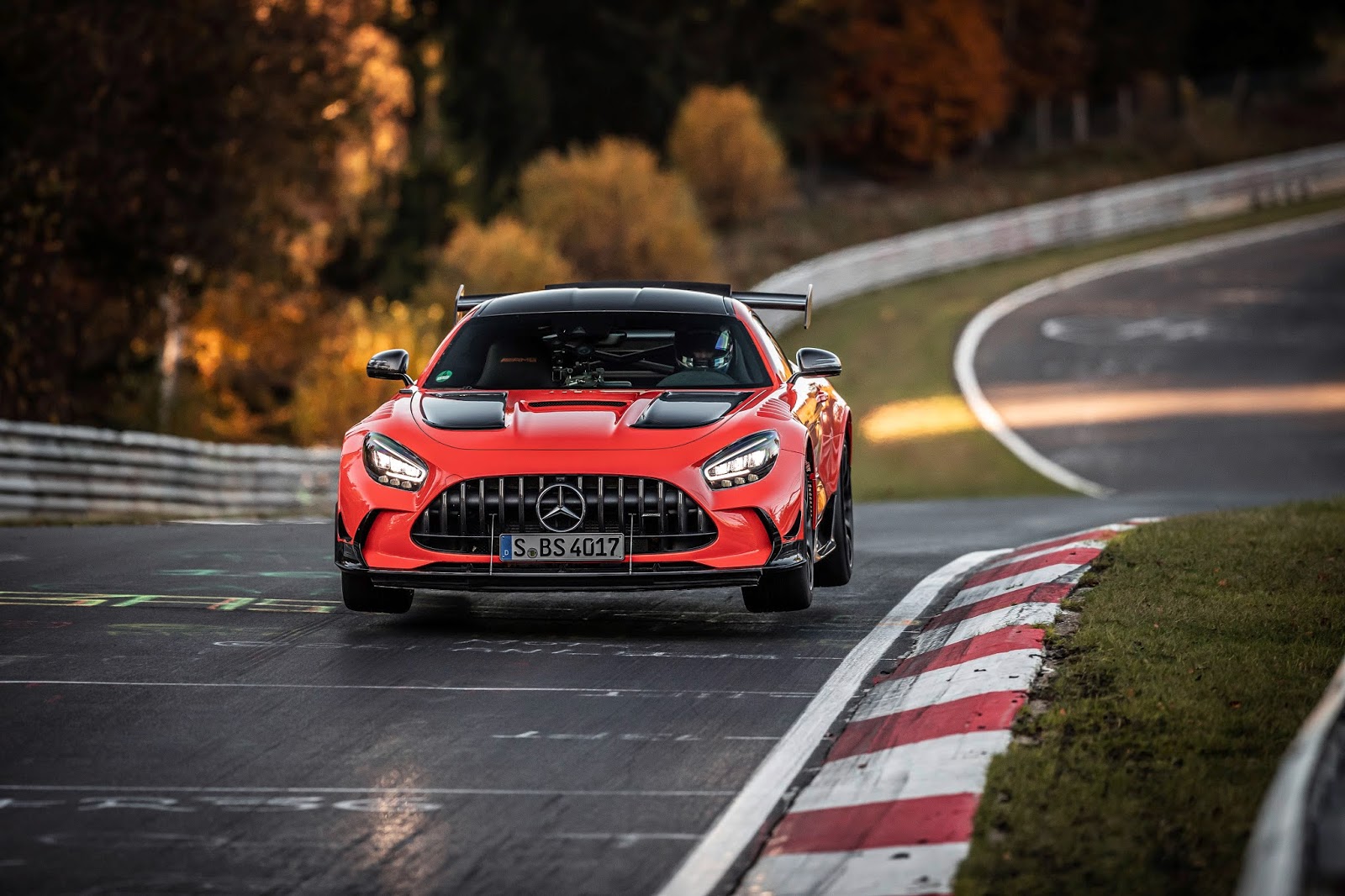
What's most impressive, however, is that Mercedes did nothing more than simply make the most of its tuning capabilities and possibilities. which has as standard The GT Black Series. At the wheel was the 35-year-old Mercedes-AMG driver in the GT3 class, Maro Engel.
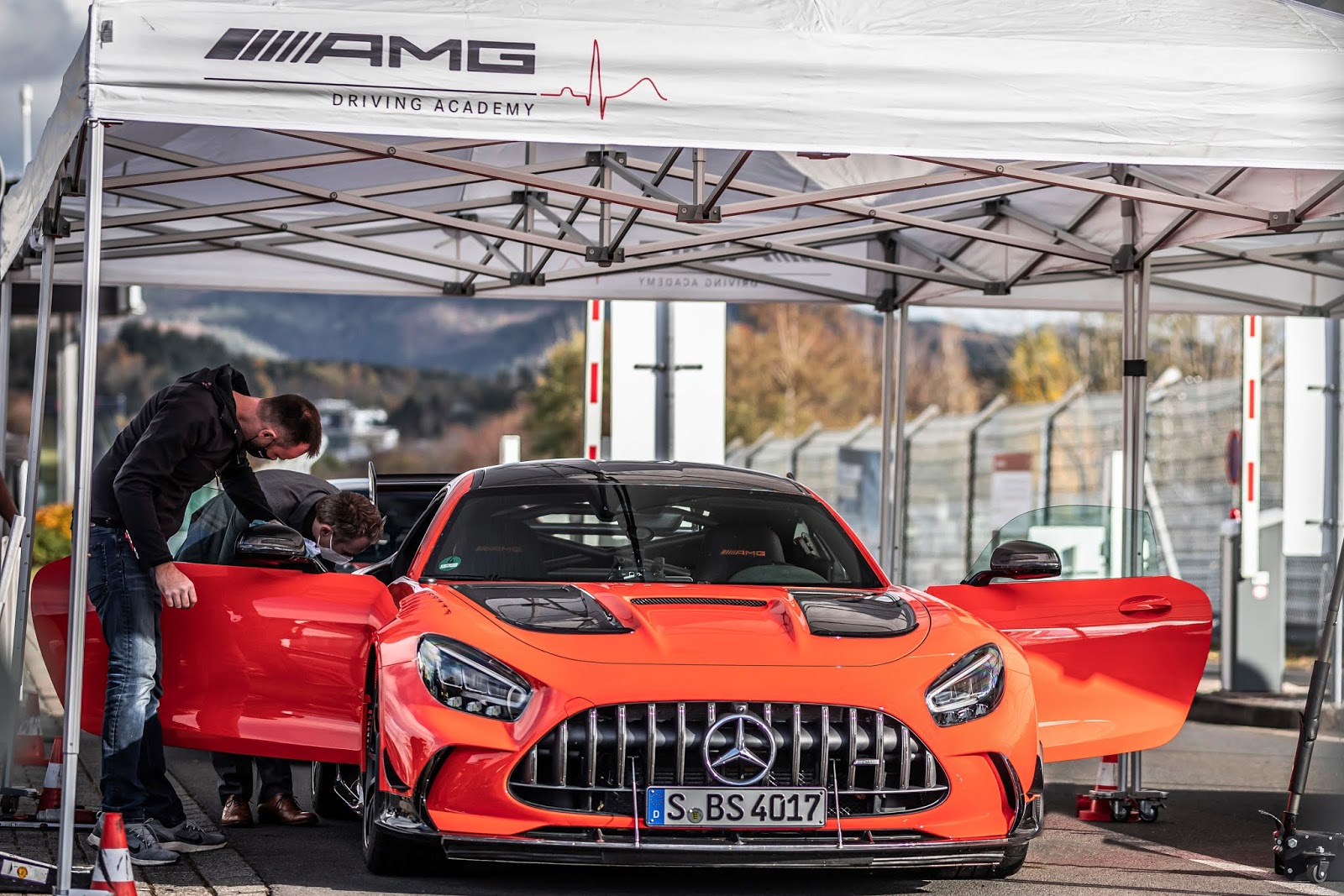
Engel and the Mercedes engineers used the following setup to achieve the record. The front splitter was opened to the Race position, while the upper and lower rear spoiler flaps were set to the middle position. The GT Black Series adjustable suspension was set at -5mm front and -3mm rear, while the front and rear camber was set to the maximum possible negative camber, -3.8 degrees front and -3 degrees rear. On the electronically adjustable anti-roll bars, Engel used the stiffest of the three available settings, while on AMG Traction Control, he used positions 6 and 7 (At 0, it allows full sway bar freedom, while at position 9, almost none at all). All of these, are settings that any owner can make, since they are part of the standard equipment of the GT Black Series.
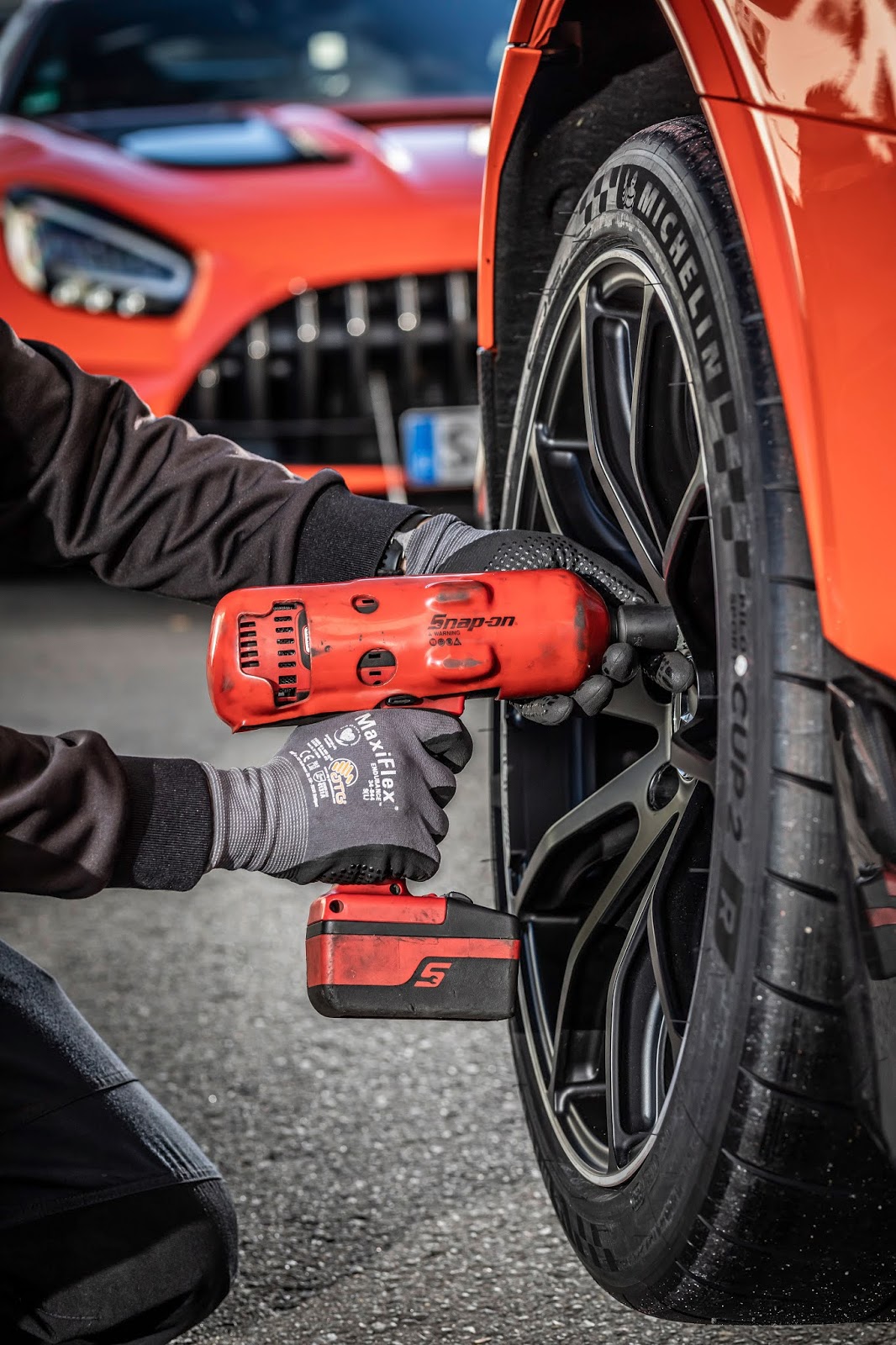
So are the tyres used by Mercedes, Michelin's specially designed for GT Black Series, Cup 2 R tyres, with the only "difference" being the warm-up with blankets in the pits, as time costs a lot of money at the Nurburgring. The GT Black Series brakes showed no signs of fatigue according to Engel, while the roll-cage and 4-point harnesses (part of the Track Package, which is standard equipment) give the driver great confidence and a sense of security should the unexpected happen.
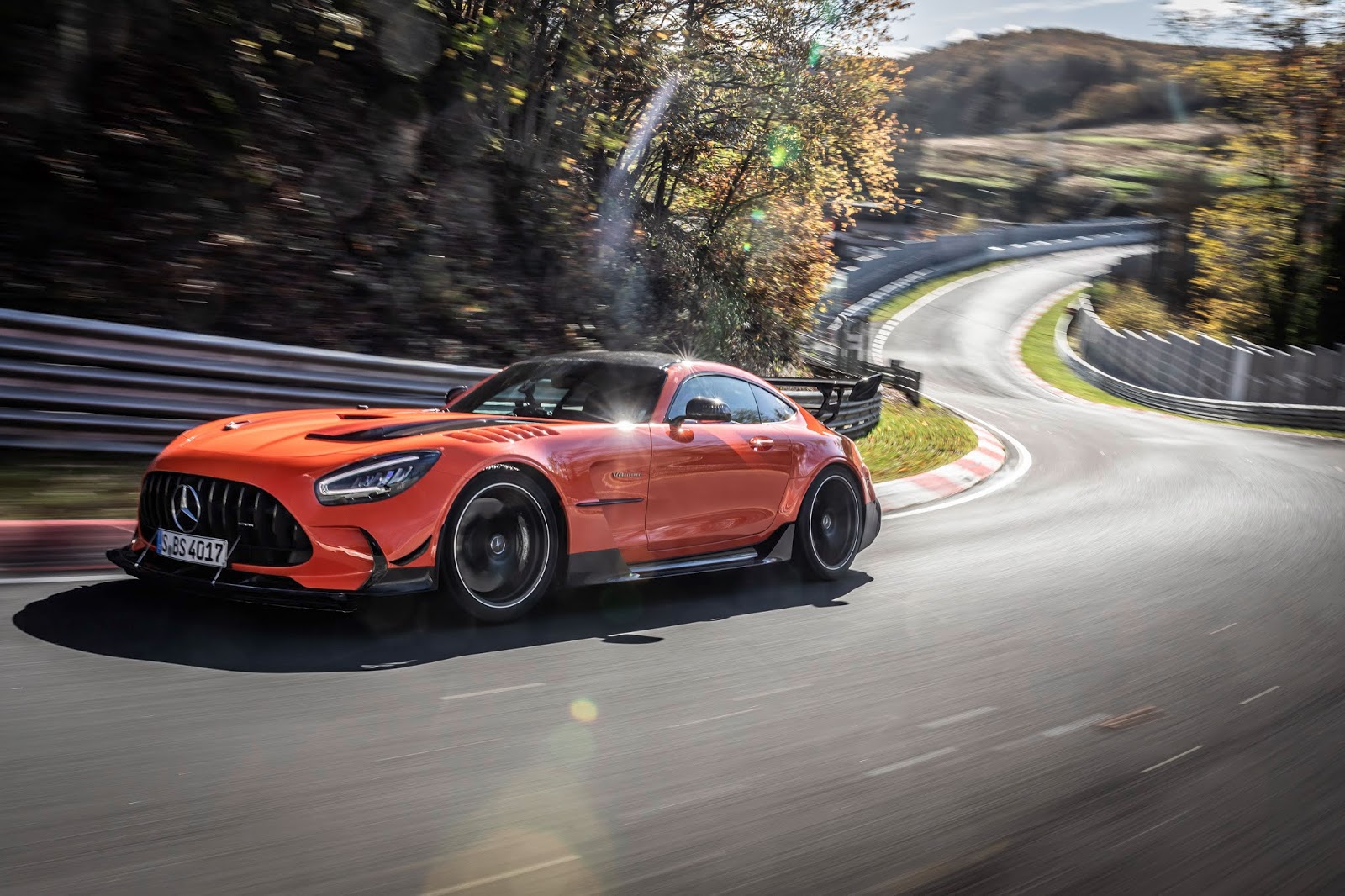
The 400 kg of vertical aerodynamic load at 250 km/h enabled Engel to travel at almost 270 km/h on the Kesselchen section of the track, while on the long Doettinger Hoehe straight, the GT Black Series' speed exceeded 300 km/h.

Maro Engel said : "It's really impressive how much downforce the GT Black Series produces and how much confidence it gives you to drive it to the limit. My congratulations to the Affalterbach engineers for the car they have created. I am very pleased to have been given the opportunity to show the capabilities that this amazing car has." It is worth noting that with a temperature of 7 degrees in the air, 10 degrees on the asphalt and with many tracks in fast corners being slightly damp due to being in the shade, the conditions were less than ideal for setting a record.
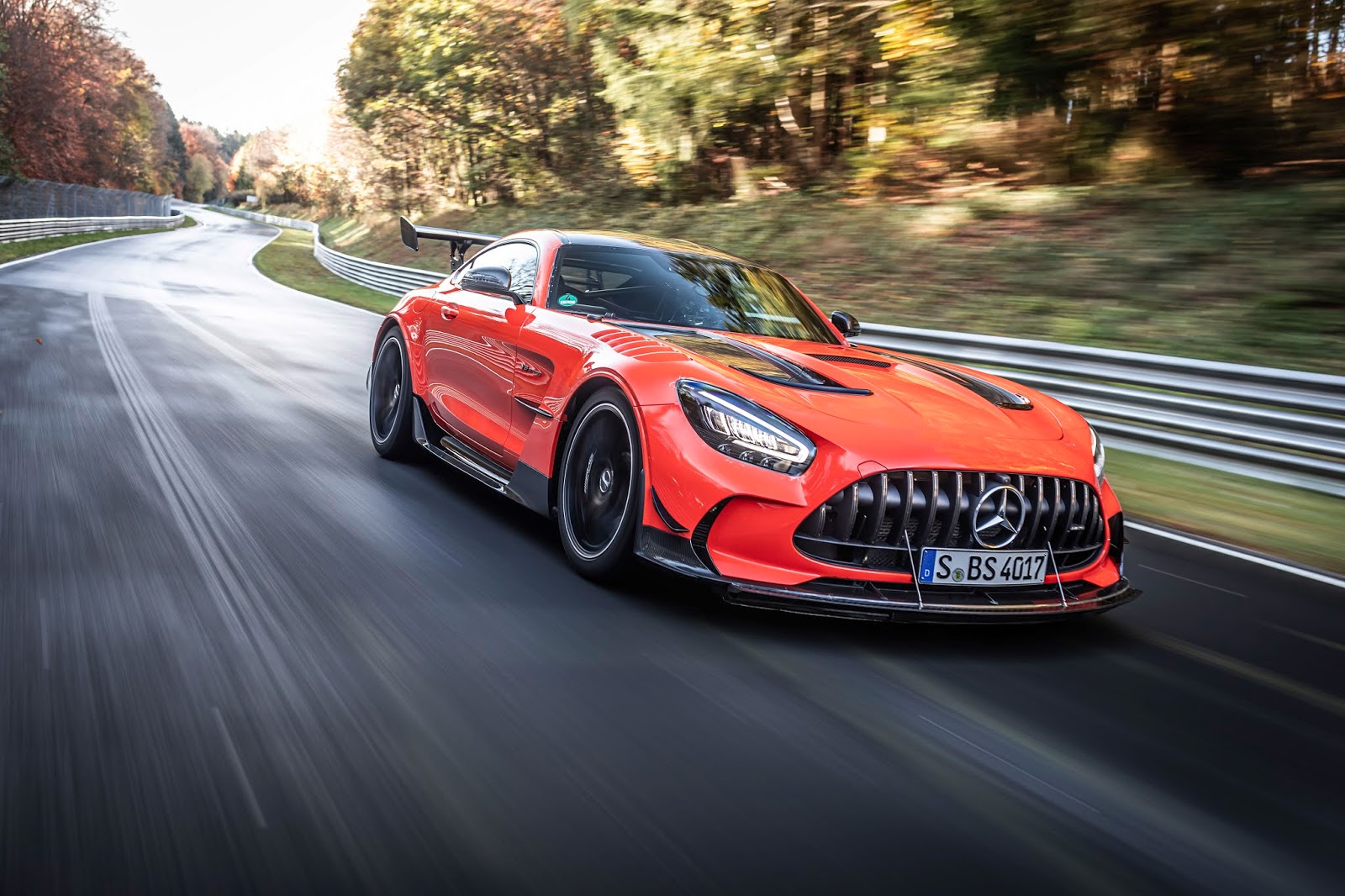
The official and confirmed lap timing of the GT Black Series was done by the telemetry company "Wige Solutions" and confirmed by the Nurburgring supervisors, both for the accuracy of the timing and for the fact that the car only carried elements of its basic equipment. You can watch the lap, in the video below:
Clarification on the length of the track
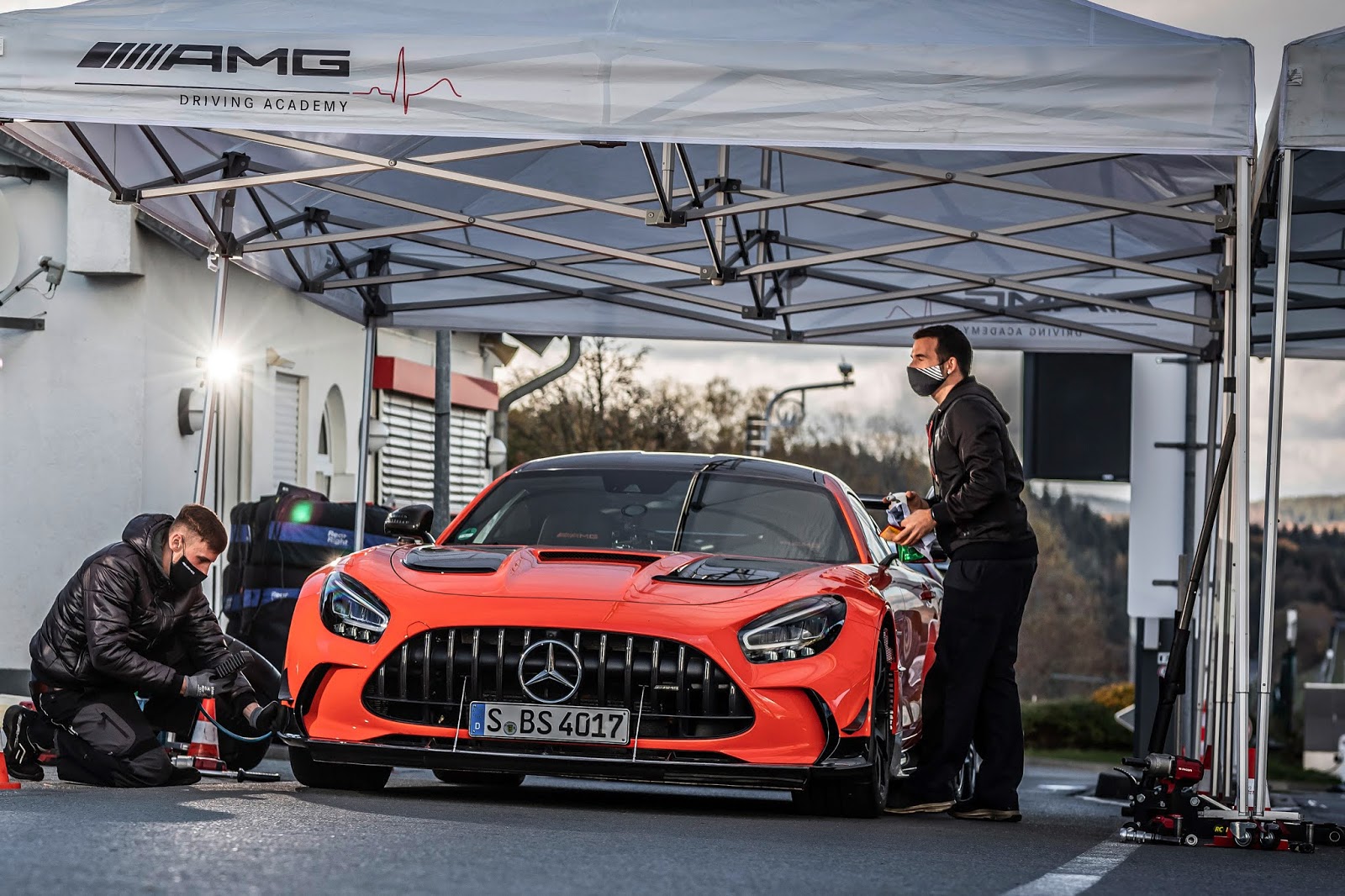
According to tradition and the timing that has been done for many years, the official published time is for the start on the move from the line at the pit exit (the point where the Grand Prix track enters the Nordschleife) and is completed before the final corner (the part where the Nordschleife starts to enter the Grand Prix track). This has been done since 1997, for historical reasons, by the "Supertest" of "Sport Auto". So the part that is not counted is called "T13 straight".
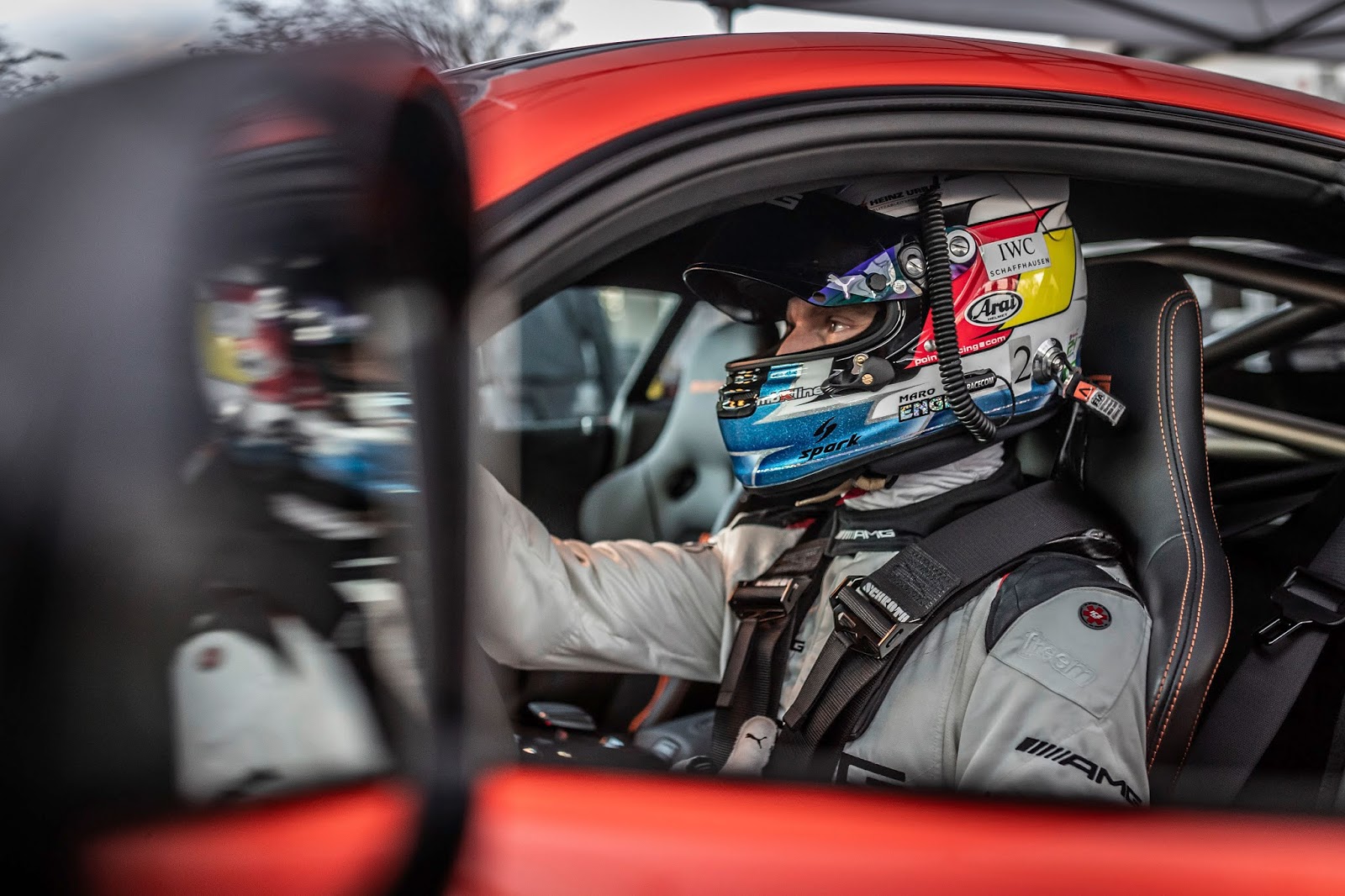
But since 2019, the "Nurburgring 1927 Gmbh" (the track itself) has introduced its own time table and its own expert committee that confirms that the cars do not have any special modifications, and includes the T13 straight. That's why there are two track lengths (20.6 & 20.832 kilometres, respectively).


